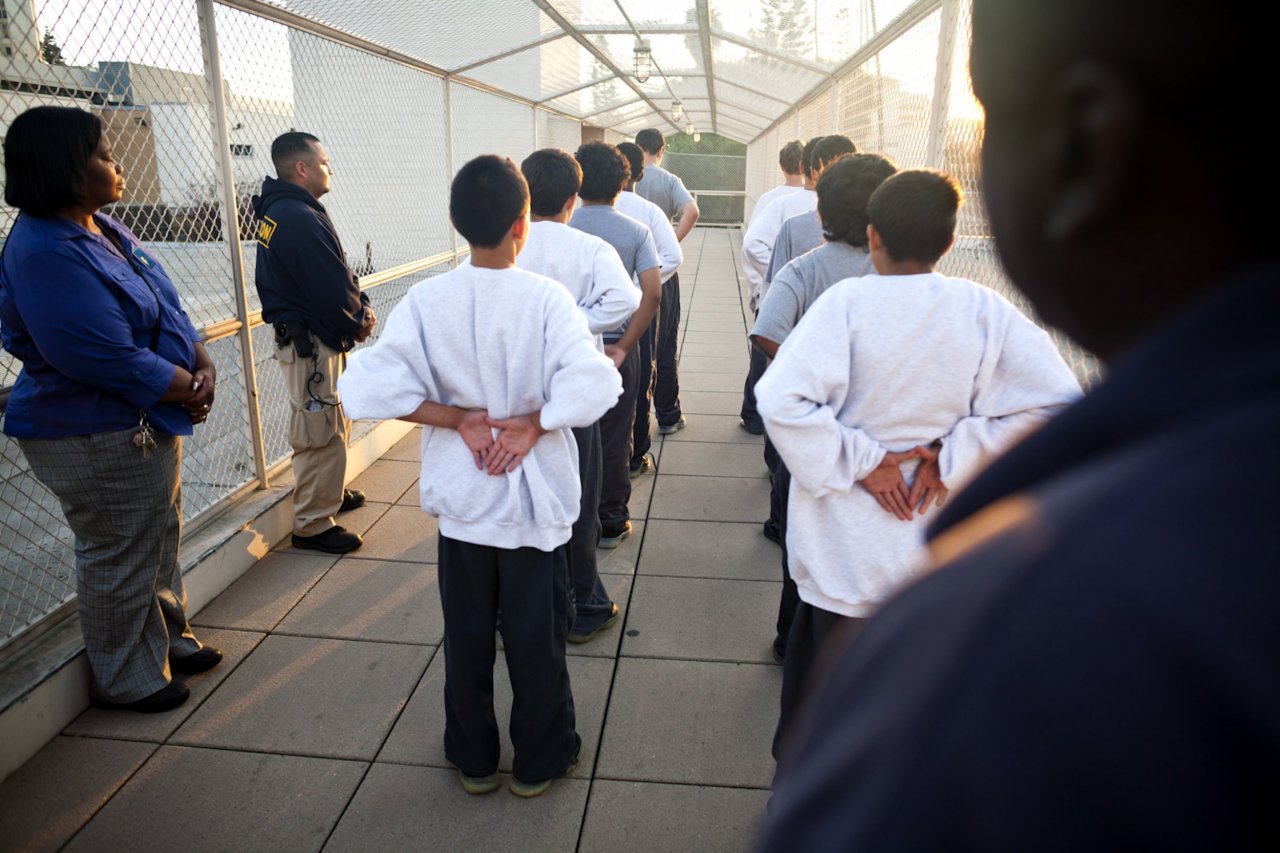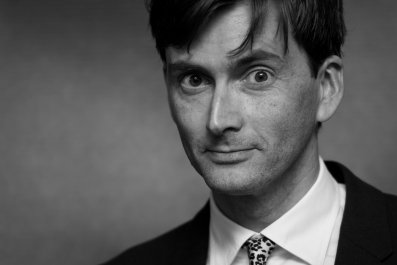On a rainy morning in the fall of 1993, Antonio House made a choice he would come to regret. House, who had turned 19 just two months earlier, was a member of the Unknown Vice Lords gang on the South Side of Chicago; his job was to sell drugs for the Lords. When he showed up at his corner that day, a fellow gang member relayed a message from the boss to drive down to some nearby railroad tracks instead. Once House arrived, he realized he was being asked to be a lookout. In a decision that would alter the course of his life, he stuck around. A few moments later, he heard eight gunshots. His boss had just shot two rival gang members.
House quickly drove off—later, he claimed he was unaware there were going to be murders, but it didn't matter. He was convicted of two counts of first-degree murder. Illinois law mandated that he be sentenced to life without parole—the same sentence that applied to his boss, who orchestrated the murders and pulled the trigger.
The crime, despite its brutality, was fairly unremarkable—gang-related homicides account for 13 percent of all homicides in the U.S., despite gang members making up way less than 1 percent of the population. But what is remarkable is that this past December, over 20 years later, an appeals court made a highly unusual ruling: It vacated House's life sentence and ordered a new hearing based, in part, on a growing body of evidence from neuroscience that brains continue to develop well into a person's 20s. The question wasn't whether or not House acted as a lookout. He did. But, the reasoning went, because his brain was still immature at 19, House's age should be a factor to reduce his sentence.
The Supreme Court has increasingly called upon new findings in neuroscience and psychology in a series of rulings over the past decade (Roper v. Simmons, Graham v. Florida, Miller v. Alabama and Montgomery v. Louisiana) that prohibited harsh punishments—such as the death penalty and mandatory life without parole—for offenders under 18. Due to their immaturity, the argument goes, they are less culpable and so deserve less punishment than those 18 or older. In addition, because their wrongdoing is often the product of immaturity, younger criminals may have a greater potential for reform. Now people are questioning whether the age of 18 has any scientific meaning.
"People are not magically different on their 18th birthday," says Elizabeth Scott, a professor of law at Columbia University whose work was cited in the seminal Roper case. "Their brains are still maturing, and the criminal justice system should find a way to take that into account."
House's case is the first to successfully apply the Supreme Court's reasoning about juveniles to someone who committed a crime after age 18—and the decision could mark a turning point in American law. The 18-to-24 demographic makes up only 10 percent of the population but accounts for 27 percent of all criminal arrests . Leniency in this high-crime population, opponents argue, could compromise public safety. Yet it's also clear that the current system does not work. Recidivism rates for offenders aged 18 to 24 are breathtakingly high: 78 percent of 18- to 24-year-olds released from prison are rearrested, and half return to prison again.
Few would argue that a 13-year-old is developmentally the same as a 25-year-old, but there's a gray zone in between, says B.J. Casey, director of the Sackler Institute for Developmental Psychobiology at Cornell's Weill Medical College. For the criminal justice system, she says, "it's basically a question of, When is an adolescent an adult?"
Casey is leading an unlikely consortium of scientists and legal scholars, including Scott, to home in on the young adult mind. In a set of experiments published last month in the journal Psychological Science, Casey and her collaborators asked: At what age do people gain the ability to control themselves in emotionally charged situations? To try to answer this question, they placed 13- to 25-year-olds into a brain scanner while asking them to do a task that required restraint. The instructions were simple: Press a button if you see a bored or scared face, but don't press it if you see a happy face. The twist was that the subjects performed the task under three conditions: positive arousal, negative arousal and no arousal. In the first condition, they were told ahead of time that at any moment they could be awarded up to $100, while in the second condition they were told there could be a loud noise. In the third condition, the subjects were told nothing.
The idea was that the first two conditions would create a sustained period of heightened emotion. It was inspired by the circumstances of criminal behavior: Many crimes by the young are in emotionally or socially charged situations. The question, says Casey, is, Why, in the heat of the moment, under threat, do they pull the trigger, even when they know better?
The results of her experiment involving negative stimulus were striking: 18- to 21-year-olds were less able than 22- to 25-year-olds to restrain themselves from pushing the button when there was the threat of a loud sound. (This diminished cognitive control was not observed under positive or neutral conditions.) In fact, under the threatening condition, says Casey, the 18- to 21-year olds "weren't much better than teenagers." The brain scanners revealed a telltale pattern: Areas in the prefrontal cortex that regulate emotion showed reduced activity, while areas linked to emotional centers were in high gear.
These results support previous brain-imaging studies and postmortem examinations. Brain areas involved in reasoning and self-control, such as the prefrontal cortex, are not fully developed until the mid-20s—a far later age than previously thought. Brain areas involved in emotions such as desire and fear, however, seem to be fully developed by 17. This pattern of brain development creates a perfect storm for crime: Around the ages of 18 to 21, people have the capacity for adult emotions yet a teenager's ability to control them.
Fueled in part by studies such as Casey's, legal experts and policymakers are beginning to reconsider how the criminal justice system treats this age range. Vincent Schiraldi, a former commissioner of probation for New York City and now a senior research fellow at the Harvard Kennedy School's Program in Criminal Justice Policy and Management, argues that offenders should not enter the adult system until 21, with gradually diminishing protections until 25. "Anyone who has a 22-year-old living in his childhood bedroom," Schiraldi says, "knows they aren't the same as older adults."
In many countries, 18 as the threshold for adulthood is already a thing of the past. In Germany, it has been age 21 since 1953, and in Switzerland it's 25. Here in the U.S., a bill was filed last month to raise the age in Illinois to 21. Governor Dannel Malloy of Connecticut—inspired by a recent trip to Germany—has been outspoken about making similar changes in his state. Last fall, he proposed raising the juvenile age to 20 and instituting alternative ways to deal with people up to age 25, such as keeping convictions for less serious crimes confidential and establishing a special young-offender prison whose sole focus is reform and reintegration.
There are already a few places in the U.S. experimenting with some of those alternatives. This April, the Brooklyn District Attorney's Office, in partnership with the Center for Court Innovation, is piloting a separate court system for ages 16 to 24 (offenders 16 and older are currently treated as adults in New York). The court—which is beginning with low-level offenses—has a dedicated judge, defense staff, prosecutors and social workers. The San Francisco DA launched a similar program last summer but focused on felonies, including violent crimes. Both programs are working on an approach that takes developmental factors into account, and all parties receive training from an in-house expert in the field. "Neuroscience," says Katy Weinstein Miller, chief of alternative programs and initiatives at the San Francisco DA's office, "has really informed everything we do in court."
Whatever the approach may be, it is sure to be controversial. Take the case of Boston Marathon bomber Dzokhar Tsarnaev, who was 19 at the time of his crimes. Tsarnaev's attorneys argued that his age should shield him from the death penalty; they drew on the science of adolescent and young adult development—especially with regard to his susceptibility to the influence of his older brother. The period between ages 17 and 20, science shows, is exactly when people tend to develop mature abilities to resist coercion. Laurence Steinberg, a professor of psychology at Temple University and author of Age of Opportunity: Lessons From the New Science of Adolescence, wrote in The Boston Globe that Tsarnaev's trial was a "referendum on how we view and define adolescence," asking "how best to judge the behavior of those who are legal adults, but in many respects neurobiological adolescents." Last May, a federal jury gave its opinion on that "referendum," sentencing Tsarnaev to death.
But Steinberg is very clear in pointing out that neuroscience would not be the basis to excuse criminal behavior. "It's not about guilt or innocence," he says. "The question is, How culpable are they, and how do we punish them?" It's easy to forget that the legal definition of an adult is a cultural construct pieced together over 100 years ago, around the time when juvenile courts were first established; this cutoff has no real empirical basis. Brain science, in a sense, merely confirms what is already apparent: Modern adolescence seems to be prolonged, with people completing school, establishing financial independence and starting families at a much later age.
Whether the legal age of adulthood should be shifted or special criminal justice programs designed is becoming an urgent matter for debate. "We have still not figured out what to do with people this age," says Steinberg. But it's probably worth trying something new.



















